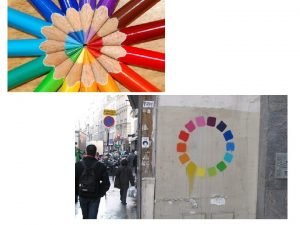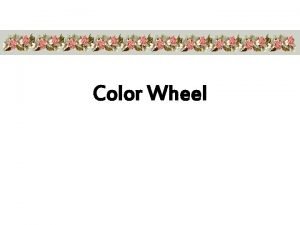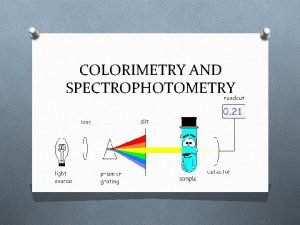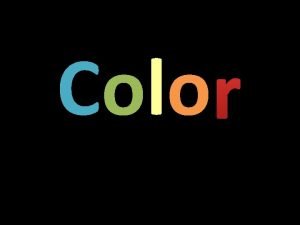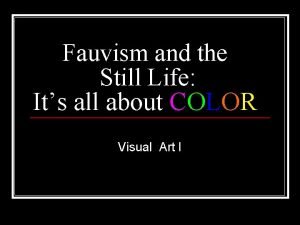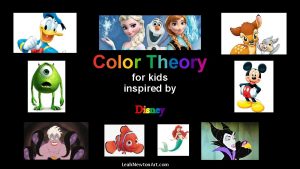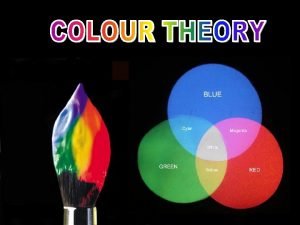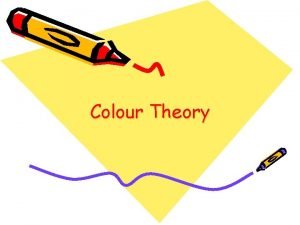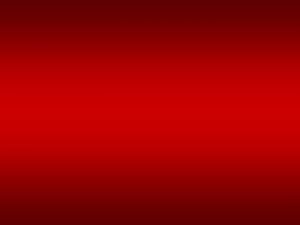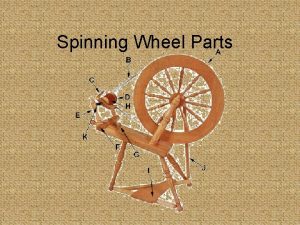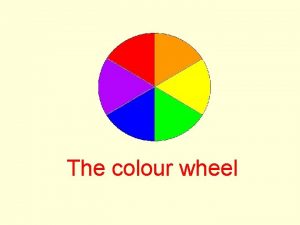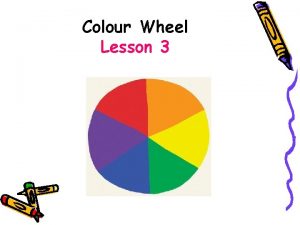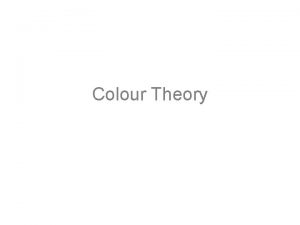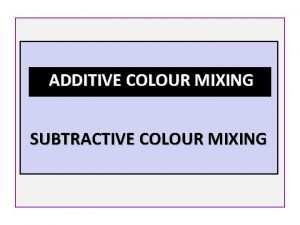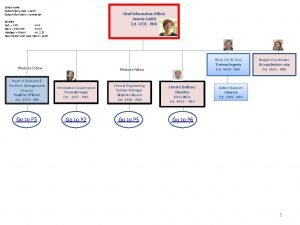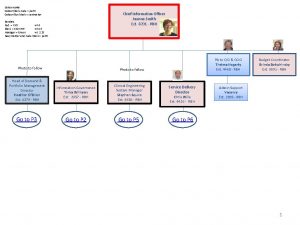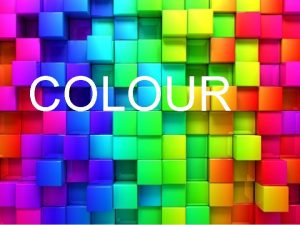Unit 2 Colour 1 THE COLOUR WHEEL 2














- Slides: 14

Unit #2 Colour 1) THE COLOUR WHEEL 2) COLOUR SCHEMES 3) COLOUR AND VALUE

THE COLOUR WHEEL Terms Hue: The name of a Colour in the Colour Spectrum Primary Hues: Red, Yellow, Blue -You cannot make the primary hues by mixing other colours together but by combining the 3 primary hues and black and white, you can create EVERY OTHER COLOUR

Secondary Hues: Made by mixing 2 primary colours Red + Yellow = ORANGE Red + Blue = VIOLET Blue + Yellow = GREEN The 3 Secondary Hues are ORANGE, VIOLET, and GREEN

Why do we need a colour wheel? THE COLOUR WHEEL: The Spectrum Bent into a circle -a tool for organizing the 12 colours -3 primary, 3 secondary, and 6 intermediate colours

Complementary Colours: The strongest contrast of a hue is produced by its complementary colour Red’s strongest constrast = GREEN -these colours combined catch the viewer’s eye -they are opposite on the COLOUR WHEEL

WARM vs. COOL COLOURS Warm Colours = RED, ORANGE, YELLOW Cool Colours = BLUE, GREEN, VIOLET Viewer associates these colours with warm and cool objects * The colour wheel is split into warm and cool colours

COLOUR SCHEMES Colour Schemes: A plan for organizing Colours -when 2 colours come in direct contact, their differences are more obvious -colour schemes organize colours according to their relationship on the colour wheel -allow you to avoid putting colours together in an unpleasant way

Most Frequently Used COLOUR SCHEMES: MONOCHROMATIC COLOURS: (monochrome means one colour) A Monochromatic Colour Scheme is one that uses one hue and tints and shades of that hue Limited Scheme = Strong unifying effect on design ANALAGOUS COLOURS: Colours that side by side on the colour wheel and have a common hue Example: Violet, Red-Violet, Red-Orange, and Orange (ALL HAVE RED IN COMMON) A Narrow Scheme would be one limited to 3 hues example: Violet, Red-Violet, Red An Analogous Colour Scheme creates a design that ties one shape to the next using a common colour

What type of Colour Scheme is this?

Artist: Picasso Title: The Tragedy Does the Painting Evoke the Feeling of the Title? Why or Why Not?

VALUE Value: the art element that describes the lightness or darkness of a colour (the amount of light a colour reflects determines its colour value) Yellow is the lightest hue (reflects the most light) Violet is the darkest hue (reflects the least light)

NEUTRAL COLOURS BLACK, WHITE, and GRAY = NEUTRAL COLOURS White Objects: reflect ALL of the colours (do not absorb ANY) Black Objects: absorb all the Colours (does not reflect ANY light) Gray = Impure White (it reflects an equal part of each colour wave)

CHANGING THE VALUE: You can change the value of any HUE by adding Black or White -A Light Value of a Hue is called a Tint (to create, add White) -A Dark Value of a Hue is called a SHADE (to create add Black)

 Chapter 74 ase questions
Chapter 74 ase questions Chapter 73 tire wheel and wheel bearing fundamentals
Chapter 73 tire wheel and wheel bearing fundamentals Stop motion screw sewing machine function
Stop motion screw sewing machine function Lakota medicine wheel colors
Lakota medicine wheel colors Tint vs shade vs hue
Tint vs shade vs hue Colors wheel
Colors wheel Colorimetry and spectrophotometry
Colorimetry and spectrophotometry Monochromatic analogous
Monochromatic analogous Fauve still life
Fauve still life Yellow and blue disney characters
Yellow and blue disney characters Pointillism colour wheel
Pointillism colour wheel Unit 10, unit 10 review tests, unit 10 general test
Unit 10, unit 10 review tests, unit 10 general test Hình ảnh bộ gõ cơ thể búng tay
Hình ảnh bộ gõ cơ thể búng tay Bổ thể
Bổ thể




